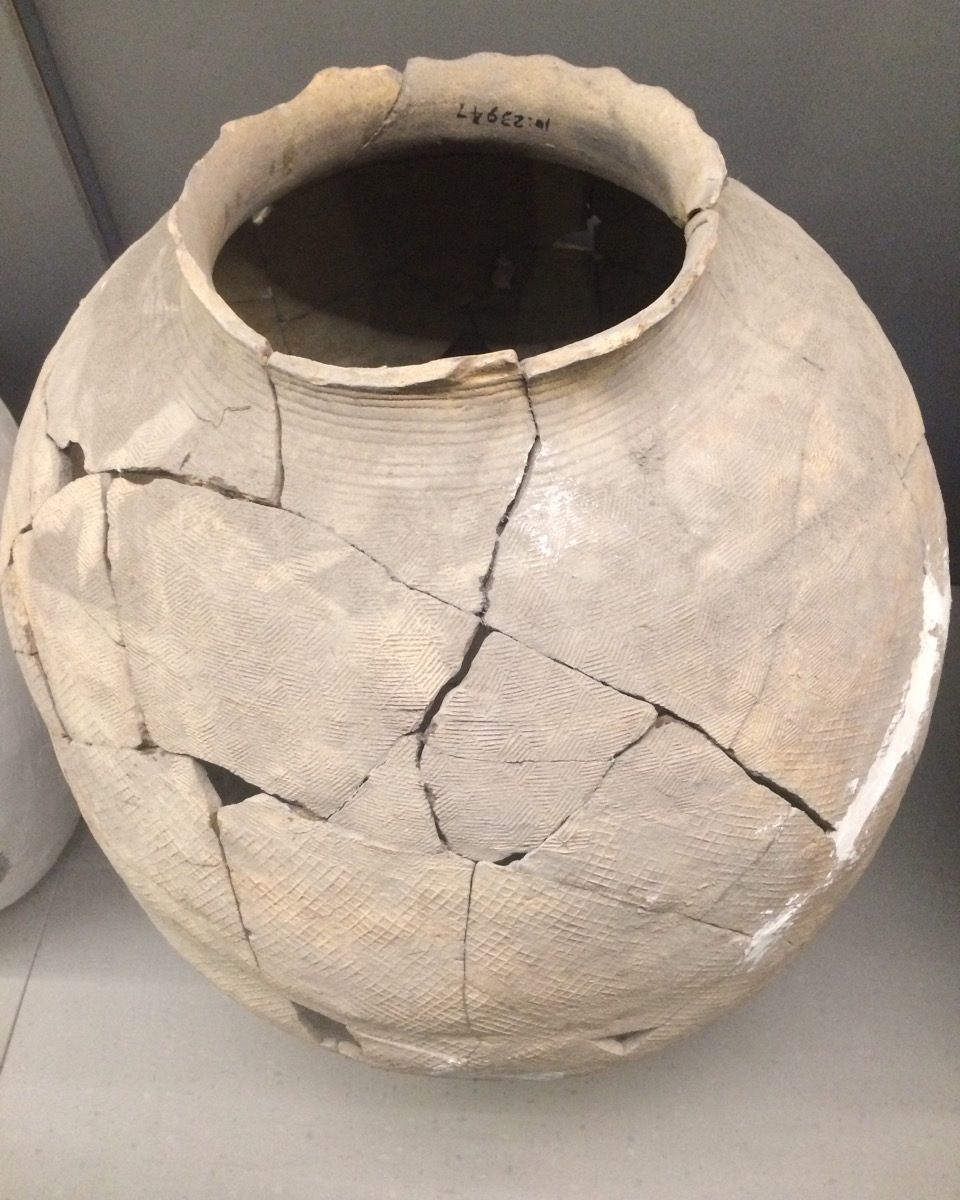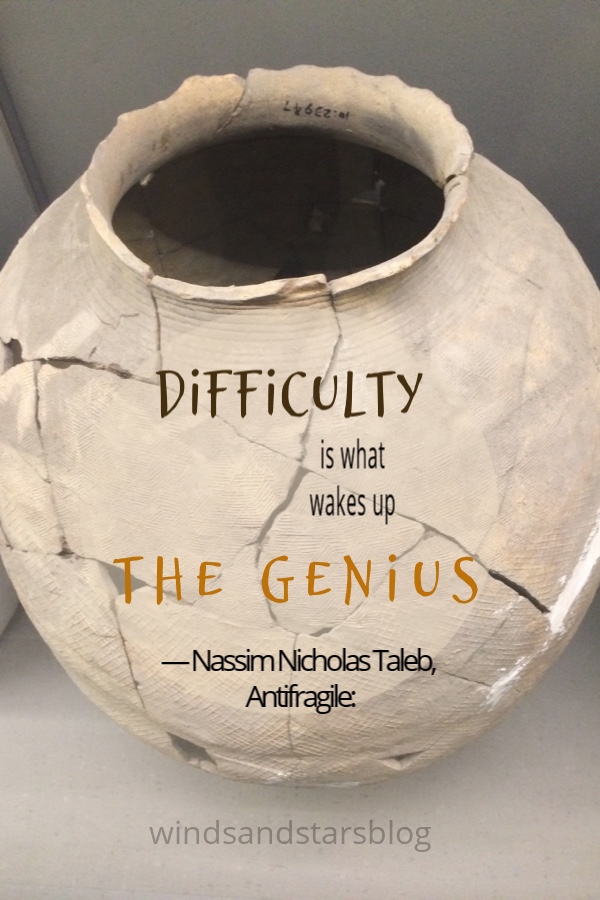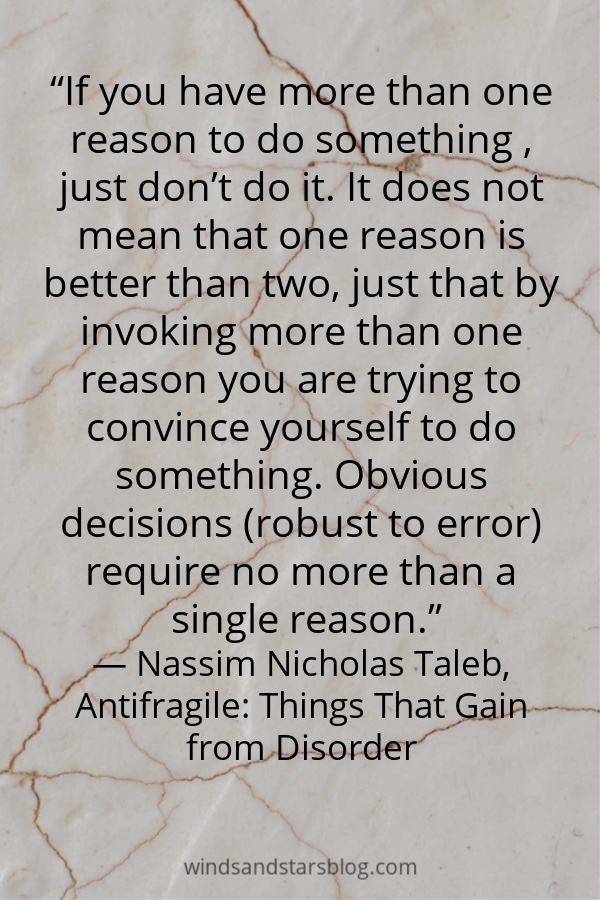Are you antifragile or fragile?
Being fragile means:
- To handle with care.
- Easily broken.
- Shattered even.
Antifragile, however, is more than unbreakable. In fact, breakage can and does occur. But antifragile is the idea that stressors strengthen it, resulting in growth.
Think of bones or muscles. Both of these grow stronger with stress. Impact helps the bones thicken and get stronger. Exercise causes micro-tears in muscles and the repair process builds up the muscle. These principles are applicable to all aspects of our lives.
So how do we become antifragile?
My last post was part travelogue, describing the ATM tour we took in Belize, and part exploration of chaos theory. Often, we are like Plato’s cave dwellers who saw life only as shadows on the wall. Our understanding of the world is based less on facts than what is reflected through the lens of our preconceived perceptions and beliefs and ways of doing things.
Being more purposeful in our lives, analyzing the way we do things, and being prepared for the unexpected helps make us antifragile.
Antifragile isn’t the same as sophisticated
The Maya civilization was sophisticated. It had developed written language, calendars, and city states. Yet in the end it proved fragile. How did it fail? What caused the collapse?
Though it’s a question unanswered, there is evidence that something unexpected occurred. Something catastrophic from which the Maya civilization could not recover. Why was it not able to use the stressors to become stronger?
We’ve all experienced chaos that ensues from a random event.
It’s Monday morning and you’re in a rush to get everyone ready to leave the house. You’re presenting at an important meeting and have just enough time to drop the older two off at school and the baby at daycare, leaving you with half-an-hour to review before the presentation.
Like clockwork, you and your offspring move through the familiar morning routine. Then it happens. The baby starts to cry. You pick him up and he throws up all over your freshly laundered outfit.
Chaos ensues. He can’t go to daycare. A full wardrobe change is needed for you. Your partner is out of town. Everyone is thrown off. What do you do? Variations of this scenario happen to all of us.
We think of chaos as whirlpools that threaten to suck us into the vortex.

But more often chaos is those random events that while we can predict will occur, we don’t know when, how, or what they’ll look like. Instead of the baby getting sick, it could have been you.
Or maybe you sliced your finger to the bone opening a tetra pack with a knife because it was quicker than trying to rip it open along the perforations. That may have happened to me once upon a time.
So what happened to the Maya?
Though the civilization collapsed, the Maya as a people continued. As individuals, they found a way through the difficult circumstances, but they didn’t ever regain the former strength as a civilization.
How could the leadership have not seen the collapse of the city-states coming? What signs did they miss? What was the tipping point from which they couldn’t recover? What made them fragile?
Unforeseen circumstances
While it’s predictable that unforeseen circumstances will occur, it’s counter-productive to try and anticipate them. We can’t analyze every little thing to determine whether it will set off a cascade of events that will sabotage our goals. Expecting danger to be lurking behind every bush robs us of happiness and can result in anxiety and paralysis.
Here are three factors that left the Maya vulnerable to the unforeseen.
Taken from Collapse by Jared Diamond
- Their staple diet was corn
- It’s storage life was only several years long
- Because it’s heavy to move, it wasn’t a currency that facilitated the growth of bartering and trade alliances
- Not a high yield crop, farmers were able to provide only for themselves and one other family
- They engaged in extensive deforestation
- Produced ash for the pyramids and other building enterprises
- Increased farmland
- Burgeoning populations
- Food production led to soil depletion as fields weren’t allowed to sit fallow.
Preparing for random event
Anticipating the occurrence of random events and preparing for them leaves you nimble and responsive. You have ways to cope. While this situation doesn’t necessarily leave you antifragile, it does leave you resilient (or as Taleb prefers to call it – robust). Without an awareness of antifragile principles, you’re vulnerable.
The sick baby is more easily handled if you’ve done one or more of the following
- You always have two outfits suitable for presentations clean and ready to go.
- There’s a grandparent or a friend who can be called at the last minute to care for your baby.
- Collaboration with a colleague means they can step in for the presentation.
- Everything was organized and checked before you left work so if you have no cushion of time, it’s okay.
- You’ll be okay.
What happens though if the event is more dire?
What happens when you lose a job? How do you cope with this? Debt places you in a state of fragility. The immediate need for money restricts your options. Whereas if you have little debt and/or have saved 6 months of living expenses, you’re are more able to cope. You’ve bought yourself time to consider your options.
Necessity is the mother of invention. Creativity and innovation is born from chaos.
What about events that there’s no coming back from?
Where no amount of preparation or planning can prepare us for it.
In Creativity is like a crazy quilt, I described the Japanese pottery that inspired the creation of the crazy quilt. Crazed pottery depicts the principle of Wabi Sabi.
Wabi Sabi is a Japanese word that embodies acceptance of transcience and imperfection. It’s developed around three ideas: nothing lasts, nothing is finished, nothing is perfect.
These principles also inform Japanese kintsugi: the art of precious scars.
This is when the randomness of the shatter is repaired with golden material, creating beauty in the broken. When pottery breaks, even when the pieces are recovered, they never fit perfectly together without evidence of the break.
About 500 years ago the method of repairing broken pottery with suture lines of gold came into being. It’s a beautiful analogy of something that goes beyond brokeness to beauty.
We become antifragile when instead of holding onto the shards of grief, we use them to piece our lives back together with golden seams of memories and love.
In his book, “Antifragile: Things That Gain From Disorder“, Nassim Nicholas Taleb says that without stressors we become fragile and unable to withstand stressors when they do come, which they will.
Things that are fragile break. Fall apart. Disintegrate. But it doesn’t have to be that way.
Given preparation and the right attitude, innovation and creativity are spun out of chaos.
An antifragile way of life is all about finding a way to gain from the inevitable disorder of life. To not only bounce back when things don’t go as planned, but to grow stronger, smarter, and better as a result of running into disorder.
~ Priscilla

Yes! I want to receive your newsletter.
Simply . . .
P.S. My next post is exploring 10 principles of antifragility through nature.



